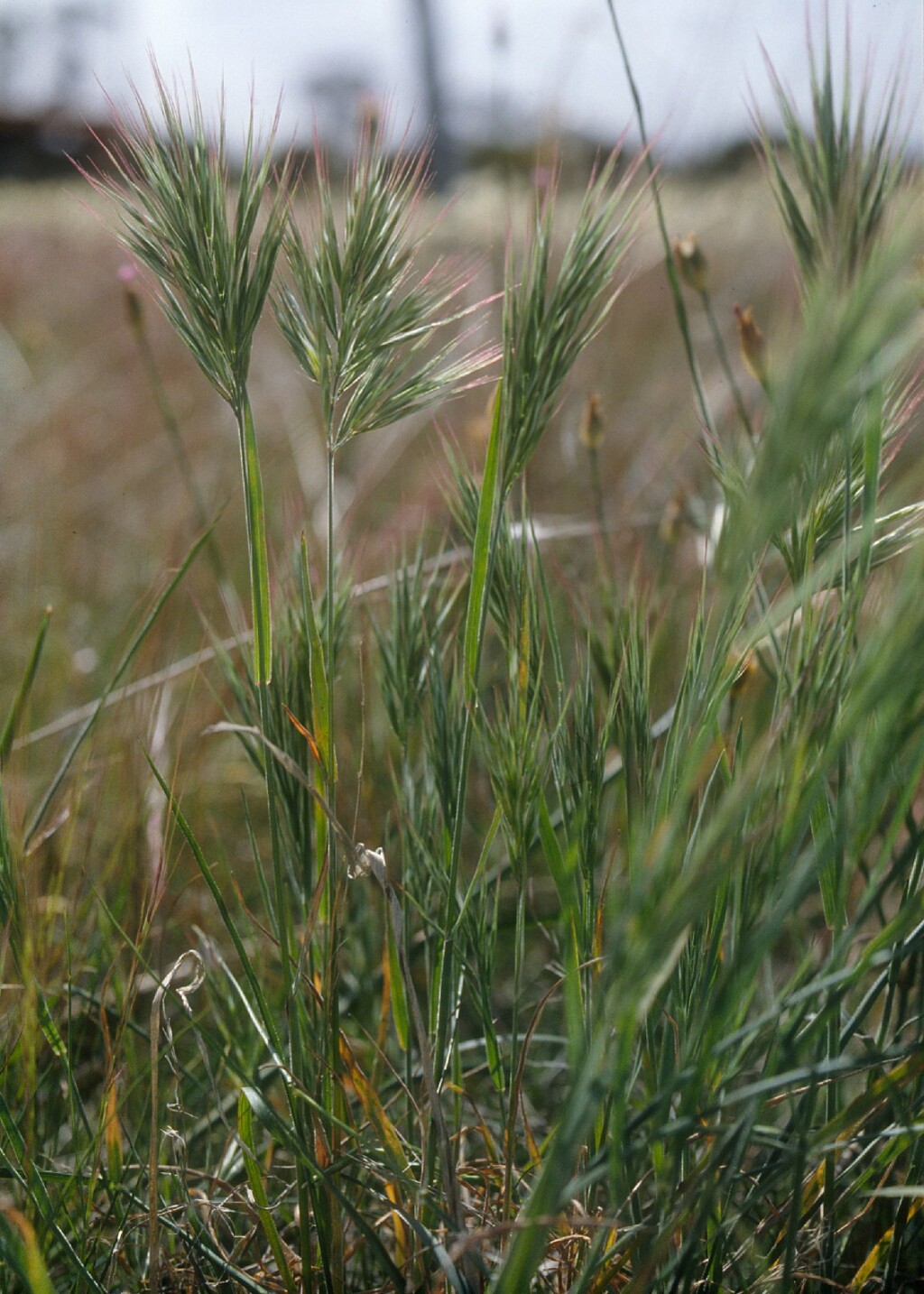Bromus rubens
L. Red BromeSlender or sometimes tufted annual, culms erect or geniculate, generally shortly pubescent below the inflorescence, to 40 cm high (rarely more). Leaves softly hairy; blade flat, to 20 cm long and 5 mm wide; ligule glabrous, toothed to deeply laciniate, 1–3 mm long. Inflorescence a dense ovoid to obovoid panicle, to 8 cm long (excluding awns), branches and pedicels erect, not or very rarely longer than 1 cm and mostly 1–4 mm. Spikelets 4–8-flowered, glabrous or hairy, narrowly oblong, 12–20 mm long (excluding awns), florets closely overlapping, remaining erect; lower glume 1-nerved, 5–8 mm long, upper glume 3-nerved, 8–12 mm long; lemma 10–14 mm long, excluding awn, dorsally rounded or almost flat, notched at apex to 4 mm deep; awn 8–12 mm long, inserted 3–5 mm below lemma apex, remaining straight or recurving slightly at maturity. Flowers Jul.–Nov.
LoM, MuM, Wim, GleP, Brid, VVP, VRiv, MSB, RobP, MuF, GipP, OtP, Gold, CVU, GGr, DunT, NIS, EGU, WPro, HSF, HNF. Naturalised in all mainland States except Qld and NT. Indigenous to the Mediterranean region. A common weed of sandy ground, dry lake beds and river flats in the north and north-west of the State, elsewhere occasional to locally common, mostly on drier sites.
Walsh, N.G. (1994). Poaceae. In: Walsh, N.G.; Entwisle, T.J., Flora of Victoria Vol. 2, Ferns and Allied Plants, Conifers and Monocotyledons, pp. 356–627. Inkata Press, Melbourne.
 Spinning
Spinning




